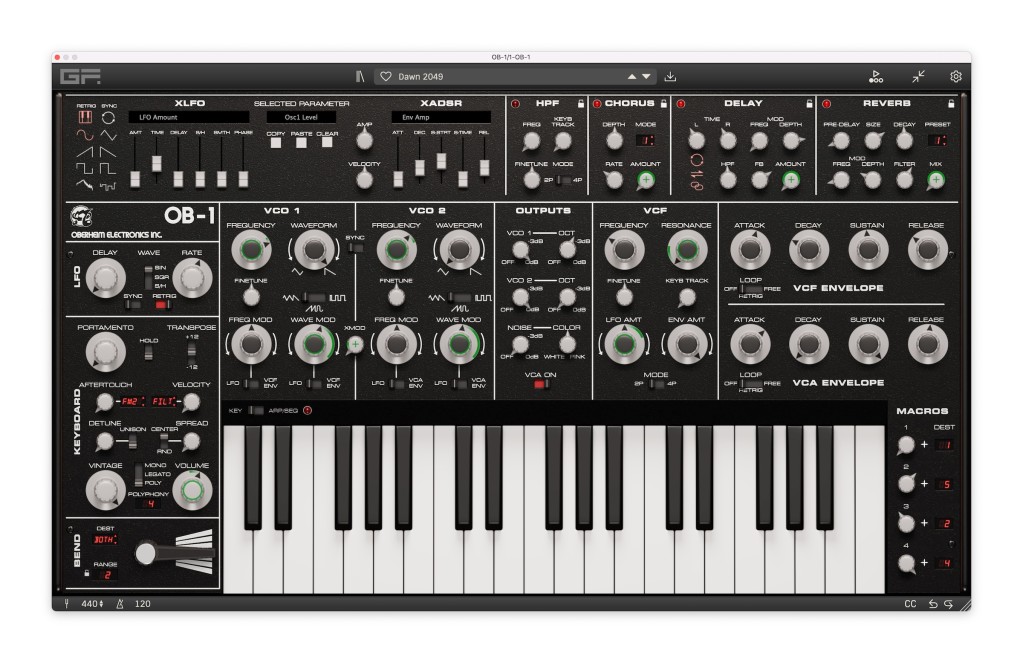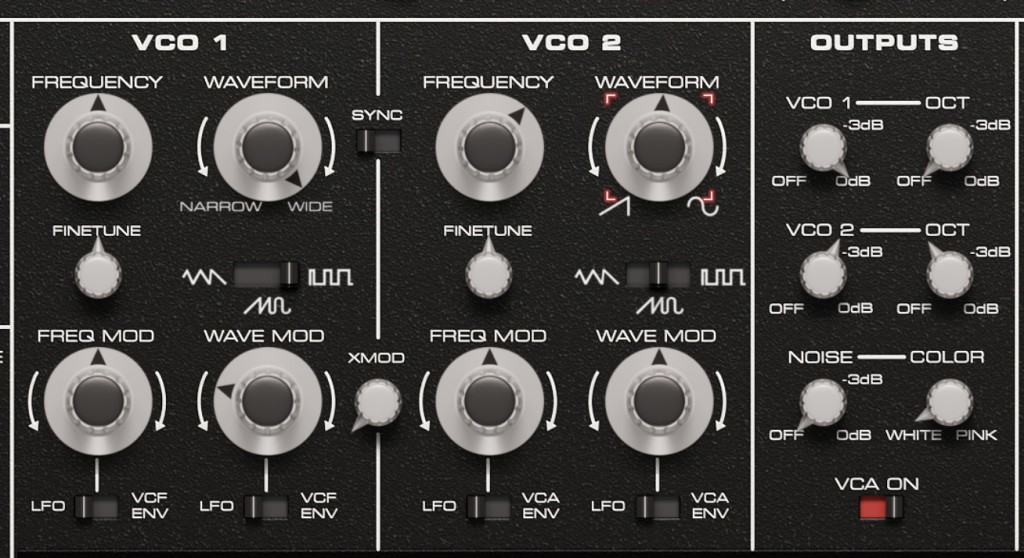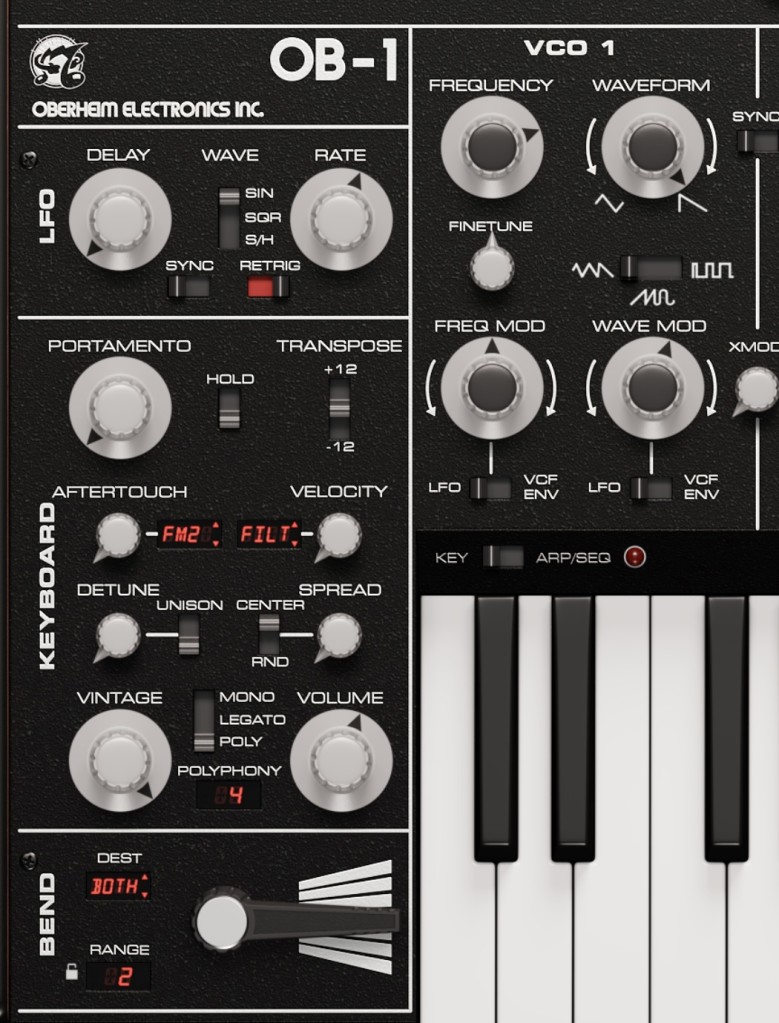Falling through a hole in space-time from 1978-1979, the Oberheim OB-1 seems strangely at home as a monosynth (or polysynth) in 2024. GForce made an addictively good recreation in plug-in form – and it’s the perfect time for Tom Oberheim himself to weigh in on his creation.
The OB-1 ought to be better known than it is. The instrument holds the honor of being the first analog monosynth to support digital patch storage, and it saw some use from the likes of Vince Clarke, Tangerine Dream, and Rush. But apart from Korg, Moog, Sequential, and Yamaha instruments of the same era, the OB-1 gets a little lost in the shuffle of retro instruments with Oberheim’s own OB-X and SEM.
Now, the OB-1 finds a new hope for redemption. GForce Software, which has gradually built up a stable of authorized Oberheim recreations blessed by Tom Oberheim himself, takes on the OB-1.

And there’s reason to pay attention. The OB-1 distills a lot of the best of Oberheim instruments, with an enormous sound that can range from trippy to angry to lush to sharp. But it does that with a panel that’s uniquely compact and clear – it’s almost like having some of the modulation powers of a CS-80 but with the simplicity of a Minimoog. (I’d put this right up there with the Prophet-5 as one of my favorite panel designs, ever – I think Sequential and Oberheim hit a real peak in elegance, a bit like when the shape of the violin was perfected.) And as GForce themselves point out, you get a sound that can be as warm and full as a Minimoog, but with the edge of an MS-20. The OB-1 sounds vintage, to be sure, but its versatile character means it can fit into a lot of creative and unexpected uses.
It’s great listening to Tom talk about this project – talking about working with Jim Cooper and the 1977 NAMM show and how the instrument came together. We get to premiere this video here on CDM for you:
That story is relatable on a number of levels, love it.
Few panels in synth history give you this much modulation in just a few controls. Hard sync, cross modulation, wave and frequency modulation, and various options and routings all fit in a small space. You don’t get the continuously variable filter of the SEM, though you do still get a unique resonant filter with both 2-pole and 4-pole modes.
Few panels in synth history give you this much modulation in just a few controls.

This being a digital plug-in, you can use it as a 16-voice poly as well as a monosynth (with unison and legato modes). You also get easily mapped aftertouch and velocity, which is something I admire on the Black Corporation synth hardware today. GForce has also thoughtfully added details like putting looping to their accurate recreation of the OB-1 4-stage VCA and VCF envelopes.
All in all, you get a whole bunch of additional features – none of which get in the way of using the OB-1 for its historical character and functionality:
- Waveform options are expanded: there’s now a pulse/sine option between the conventional triangle/saw and pulse switches from the original
- Waveshape modulation is possible (again, without disrupting the original signal path)
- Oscillator, sub, and noise now have discrete levels – this is huge for mixing timbres
- LFO adds sync and retrigger options (with sync to host, of course)
- Envelopes add looping
- Key tracking has its own discrete control
- Cross-mod knob
- Pan spread
- 16-voice polyphony, mono unison options
- High-pass filter (which I use a lot on this one; feels almost like it should have been on the original)
- Additional effects: chorus, delay, and reverb, though each of these sounds in character for 1978

GForce worked with Oberheim on these recreations, too, which again sets GForce apart. If you’re a real Oberheim fan, GForce remains the way to go.
In addition, you get additional options for playing and, of course, sensible software features for assigning modulation and recording presets. (Truth be told, preset storage on the original was fairly primitive – as you might expect from the first entry in the synth market to add the feature.)
- Four macro controls
- Arpeggiator and sequencer – one track of which can sequence the fourth macro
- Patch browsing
- X-Modifier for direct modulation of most parameters
Crucially, the original bend “paddle” you see above is recreated and assigned conventional MIDI pitch bend. That bend has multiple modes: MOD modulates both VCOs either with the main LFO (pushing up) or noise (pushing down), BOTH applies pitch bend to both VCO2, OSC2 applies to VCO2, and INV applies positive bend to VCO1 and negative to VCO2. That’s all pretty unique to the OB-1 and impacts how you approach the presets. It might also explain why there isn’t a default mod wheel or modulation assignment, though you can assign one with the CC toggle to whatever you like (for instance, filter cutoff). In the end, I decided to make a preset with MIDI assignments for the four macro knobs and CC1.
The presets are set up for both bend behavior and the four macro controls. The only downside of the macros is that while they look nice in the UI, you have to keep track of the destination via a faux-segmented LED number. But it is a reasonably flexible system.
The X-Modulation, meanwhile, is a major expansion of the capabilities of the original hardware, since any parameter can now be modulated. Just click any parameter, and you bring up modulation with custom waveforms, dedicated LFO controls, and a separate ADSR envelope.

Adding keyboard tracking, aftertouch, and the highpass filter all make for a much more playable instrument. If this were a hardware release, I have no doubt it’d be one of the most talked-about of the year. But it works beautifully in software – and these days, performance is such that with a good controller, you almost can’t tell the difference (especially with keyboard tracking, aftertouch, and macro mapping on this one)!
There’s also a step sequencer/arp available, with the ability to set separate lengths for each lane:

You get a full range of compatibility – Intel/Apple Silicon, AAX, AU, VST3, and even VST2, for macOS 10.13+ / Windows 7+. Despite the rich, analog-perfect sound, GForce also mercifully keeps system requirements light, even as you crank up polyphony.
It’s easy to overuse terms like “edgy” or “warm,” but the OB-1 is pretty unique in how well it spans the two.
It’s also hard to overstate just how nice the presets are for this. I usually skip presets entirely but keep finding myself inspired by the pitch library. Looking past some of the show-off, one-key patches, they really show off the richness of the instrument – and GForce’s bench goes deep, with presets from “Zardonic, An On a Blast, Alex Jann, Jogging House, Lightbath, Polydata, Plug Hugger, GEOsynth, Jordan Passmore, Paul K Hurst, Richard Veenstra and Ramon Kerstens (K/V), Koryu, Boudicca Bass Service, Dave Spiers, Graeme Rawson.”
It’s easy to overuse terms like “edgy” or “warm,” but the OB-1 is pretty unique in how well it spans the two. Typically you can get something aggressive and dirty, or pretty warm and comfy and retro, or more modern, but not all at once – least of all from a late 70s synth. The GForce modeling work and preset voicing bring out some of the great original work done by Jim and Tom.
I have just a couple of quick early jams from playing with the instrument at first, but I can tell you, since I downloaded this, I’ve been finding excuses to squeeze an instance into almost everything. With cross-mod and the addition of a high-pass filter, the OB-1 works well for full percussion design, too.
We clearly have enough recreations of vintage synths. But the OB-1 is something really special.
OB-1 doesn’t have its own internal tuning options, but it does have Poly Pitch Bend support, so you can bring your own. There are also some helpful preference settings, plus a resizable window.
We clearly have enough recreations of vintage synths. But the OB-1 is something really special. You get less of the sense of going back in time, and more a great set of ideas from Tom that holds up now even better than it did when launched – especially with all the niceties software has to offer. And it’s hard to find words to express how good this thing sounds. It’s finally a vintage instrument color worth adding to your arsenal, especially if you’re bored with the sameness of the always-reproduced icons.
Here’s a nice tutorial/demo by The Sound Test Room, too:
The OB-1 is on a special 50%-off intro sale now.
If you buy something from a CDM link, we may earn a commission.
Oberheim OB-1 by GForce Software [Plugin Boutique]